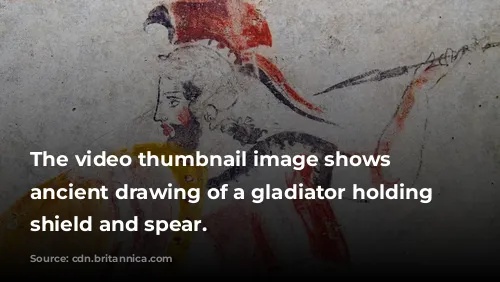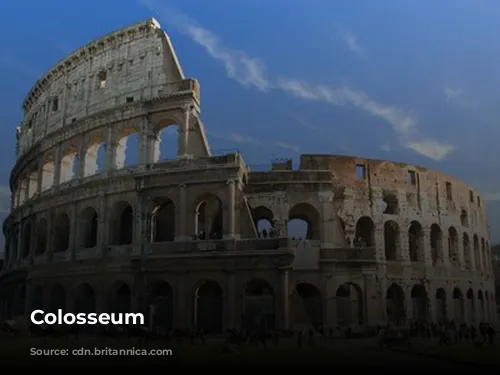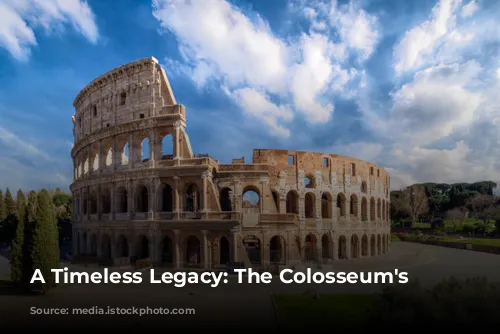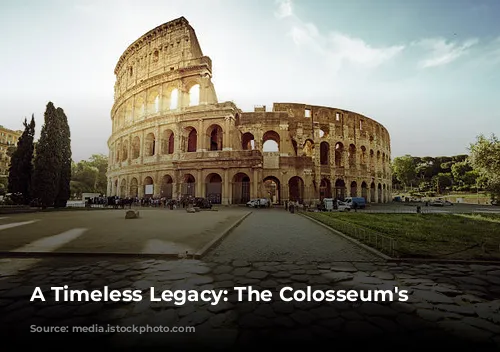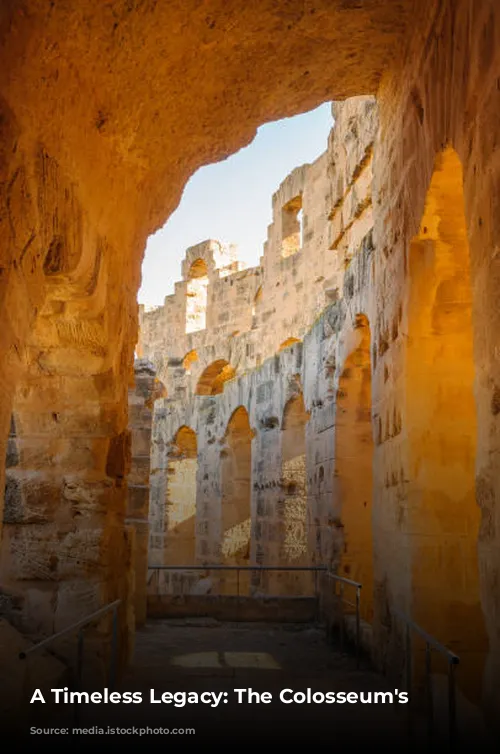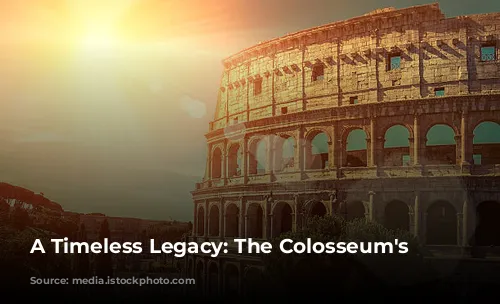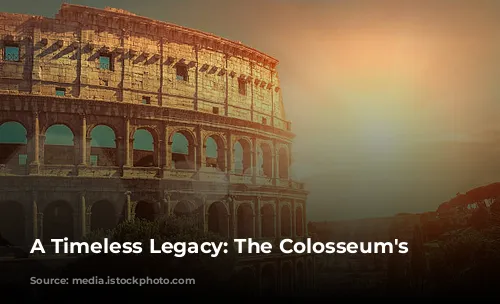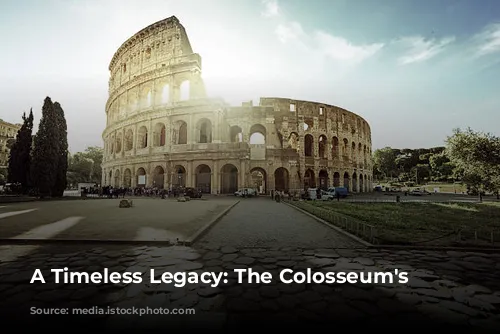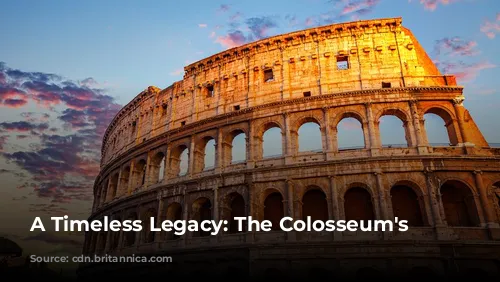The Colosseum, an enduring symbol of ancient Roman grandeur, stands as a testament to the architectural brilliance and engineering prowess of its time. It’s a sight that captivates visitors from all corners of the globe, drawing millions each year and generating significant revenue for Italy. In 2018, the Colosseum, Roman Forum, and Palatine Hill collectively raked in over $63.3 million (€53.8 million), topping the charts as Italy’s most lucrative tourist attraction.
The Colosseum’s story, however, is not without its trials and tribulations. After the fall of the Western Roman Empire, the majestic amphitheater fell into disrepair, becoming a victim of neglect and misuse. The Frangipane and Annibaldi families saw its potential as a fortress, transforming the arena into a stronghold during the 12th century. The Colosseum’s fate took a further turn in the late 15th century when Pope Alexander VI allowed it to be plundered for building materials. This period of neglect lasted over a thousand years until state-funded restoration efforts commenced in the 1990s.
The Colosseum’s construction was part of a grand imperial effort to revitalize Rome following the turbulent year of the Four Emperors in 69 CE. Like other amphitheaters of its time, Emperor Vespasian envisioned the Colosseum as a grand stage for public entertainment, a place for gladiatorial combat, animal hunts, and even theatrical naval battles.
The Colosseum’s construction began under Emperor Vespasian between 70 and 72 CE. The completed structure was dedicated in 80 CE by Vespasian’s son and successor, Titus. Emperor Domitian added the Colosseum’s fourth story in 82 CE. Interestingly, the funding for this magnificent structure came from the spoils of war – the plunder from Titus’s capture of Jerusalem in 70 CE. The Colosseum’s construction was carried out by enslaved Jews from Judea, a stark reminder of the Roman Empire’s power dynamics.
A Monument to Might: Construction and Design
The Colosseum, also known as the Flavian Amphitheatre, is an elliptical masterpiece of stone, concrete, and tuff. This architectural marvel rises four stories high, measuring a colossal 620 by 513 feet (189 by 156 meters). Its massive scale allowed it to accommodate up to 50,000 spectators, eager to witness the gladiatorial combat for which the Colosseum became renowned.
The Colosseum’s construction is a testament to Roman engineering prowess. Unlike earlier amphitheaters carved into hillsides for support, the Colosseum stands as a freestanding structure, a marvel of stone and concrete. The engineers employed a complex system of barrel vaults and groin vaults to support the structure’s immense weight. The Colosseum’s exterior is adorned with three levels of arcades, each featuring engaged columns in the Doric, Ionic, and Corinthian orders. This rising arrangement of columns would later inspire the Renaissance codification of architectural orders. The Colosseum’s primary structure is built with travertine, while secondary walls are crafted from volcanic tufa, and the inner bowl and arcade vaults are made of concrete.
A Stage for Spectacle: The Colosseum in Action
The Colosseum provided a grand stage for entertainment, shielding its massive audience from the sun with a retractable awning known as a velarium. Hundreds of Roman sailors were responsible for manipulating the rigging that extended and retracted this massive awning, supported by masts anchored to corbels built into the Colosseum’s top story. The Colosseum witnessed countless spectacles, including gladiatorial combat, animal hunts, and even mock naval battles. While the Colosseum is often linked to the martyrdom of early Christians, the historical evidence for this connection is uncertain.

The Colosseum’s Legacy: From Neglect to Restoration
The Colosseum’s story takes a turn in the Middle Ages, where it found itself transformed from a stage for spectacle to a fortress and then a quarry. The Frangipane and Annibaldi families used the Colosseum as their stronghold, while later, it was stripped of its marble seats and decorative materials, its grandeur sacrificed to serve as a source of building materials. This period of neglect lasted for over a thousand years, leaving the Colosseum scarred by vandalism, pollution, lightning strikes, and earthquakes.
The tide began to turn in the 19th century when preservation efforts were initiated, most notably led by Pius VIII. In the 1990s, a large-scale restoration project was undertaken, breathing new life into this iconic monument. Today, the Colosseum stands as one of Rome’s most treasured tourist attractions, attracting nearly seven million visitors each year. Regular exhibitions showcasing the culture of ancient Rome further enhance the Colosseum’s allure, reminding us of the enduring legacy of this remarkable structure.
The Colosseum’s journey, from its construction as a symbol of Roman power to its neglect and eventual restoration, is a story of resilience and renewal. This ancient amphitheater continues to captivate visitors, offering a glimpse into the grandeur of the Roman Empire and its enduring legacy. The Colosseum stands not only as a testament to Roman engineering but also as a reminder of the enduring power of human creativity and the importance of preserving our shared cultural heritage.
